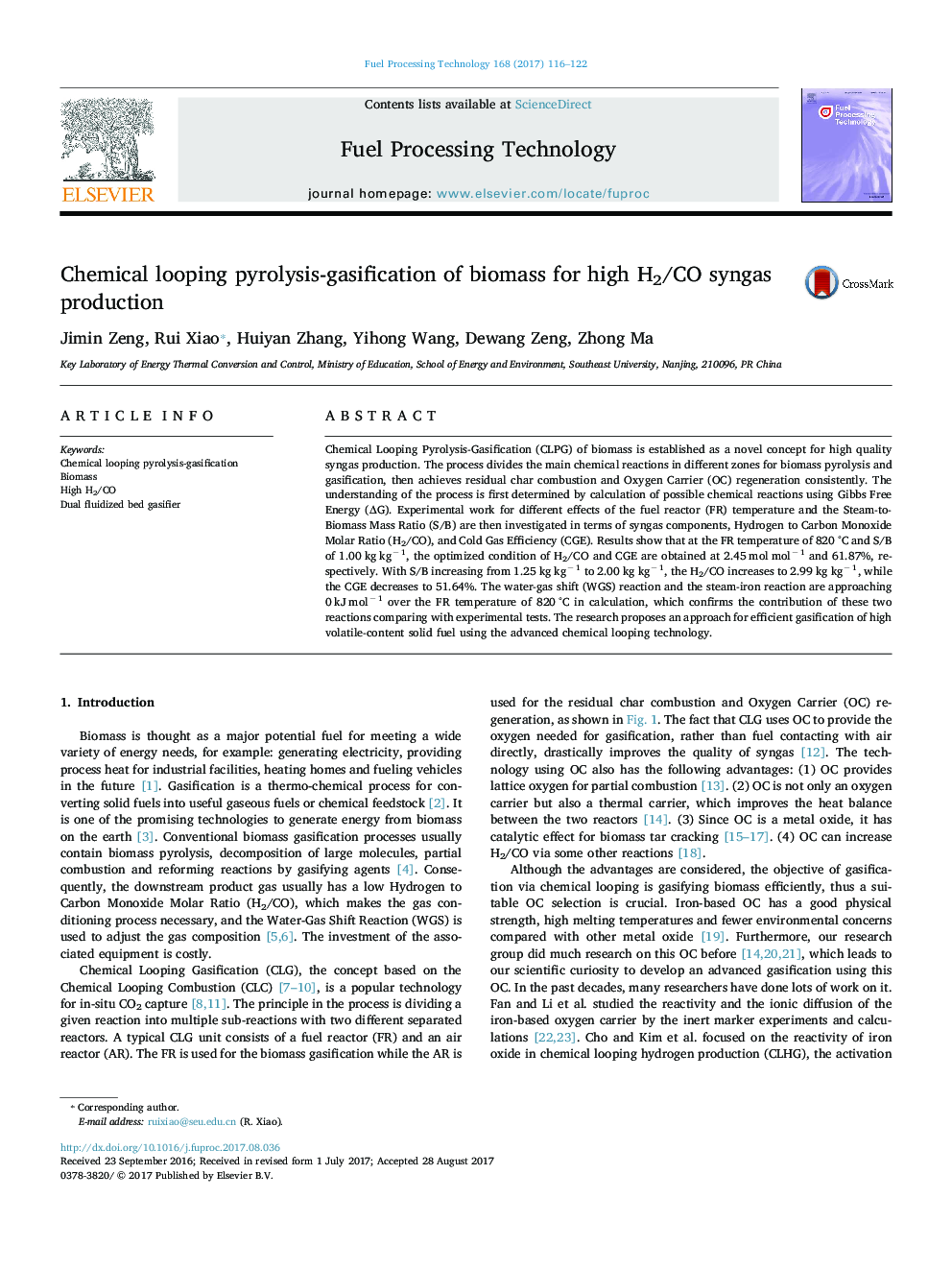| Article ID | Journal | Published Year | Pages | File Type |
|---|---|---|---|---|
| 4768820 | Fuel Processing Technology | 2017 | 7 Pages |
Abstract
Chemical Looping Pyrolysis-Gasification (CLPG) of biomass is established as a novel concept for high quality syngas production. The process divides the main chemical reactions in different zones for biomass pyrolysis and gasification, then achieves residual char combustion and Oxygen Carrier (OC) regeneration consistently. The understanding of the process is first determined by calculation of possible chemical reactions using Gibbs Free Energy (ÎG). Experimental work for different effects of the fuel reactor (FR) temperature and the Steam-to-Biomass Mass Ratio (S/B) are then investigated in terms of syngas components, Hydrogen to Carbon Monoxide Molar Ratio (H2/CO), and Cold Gas Efficiency (CGE). Results show that at the FR temperature of 820 °C and S/B of 1.00 kg kgâ 1, the optimized condition of H2/CO and CGE are obtained at 2.45 mol molâ 1 and 61.87%, respectively. With S/B increasing from 1.25 kg kgâ 1 to 2.00 kg kgâ 1, the H2/CO increases to 2.99 kg kgâ 1, while the CGE decreases to 51.64%. The water-gas shift (WGS) reaction and the steam-iron reaction are approaching 0 kJ molâ 1 over the FR temperature of 820 °C in calculation, which confirms the contribution of these two reactions comparing with experimental tests. The research proposes an approach for efficient gasification of high volatile-content solid fuel using the advanced chemical looping technology.
Keywords
Related Topics
Physical Sciences and Engineering
Chemical Engineering
Chemical Engineering (General)
Authors
Jimin Zeng, Rui Xiao, Huiyan Zhang, Yihong Wang, Dewang Zeng, Zhong Ma,
